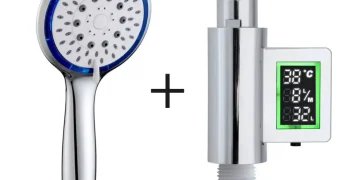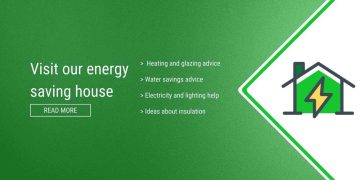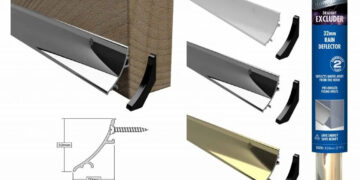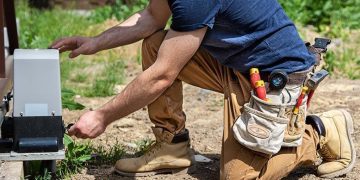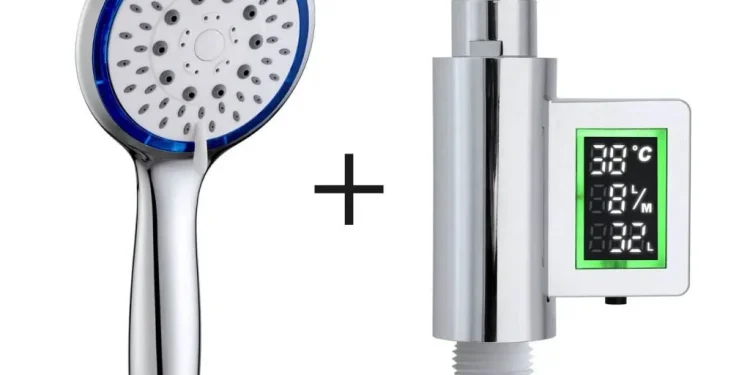Water is one of our most valuable resources, and as the demand for sustainable living grows, it’s crucial to take steps to reduce water consumption. One of the simplest and most effective ways to conserve water is by installing water flow restrictors. A water flow restrictor is a device designed to limit the flow of water in a plumbing system, reducing the amount of water used without affecting performance. Whether you’re looking to cut costs on your water bills or make your home or business more environmentally friendly, understanding how water flow restrictors work and their benefits can be essential in making informed choices. In this comprehensive guide, we’ll explore everything you need to know about water flow restrictors, including their types, benefits, installation tips, and answers to common questions.
What Are Water Flow Restrictors?
A water flow restrictor is a device that limits the amount of water that flows through a faucet, showerhead, or other plumbing fixtures. The purpose of a water flow restrictor is to reduce water consumption, which helps to conserve water, lower water bills, and reduce the environmental impact of excessive water use. These devices are commonly used in residential homes, commercial buildings, and industrial applications to improve water efficiency.
Water flow restrictors are often used in conjunction with low-flow fixtures, such as low-flow showerheads or faucets, to achieve the maximum water-saving effect. By regulating the flow of water, water flow restrictors ensure that only the necessary amount of water is used while still maintaining adequate pressure and performance.
Why Are Water Flow Restrictors Important?
Water conservation is becoming increasingly important as global water resources continue to be strained due to population growth, climate change, and other factors. By using water flow restrictors, individuals and businesses can make a significant impact on reducing water waste. Here are some reasons why water flow restrictors are essential:
- Conservation of Natural Resources
Water flow restrictors play a key role in preserving natural water resources. By using less water, we can ensure that this limited resource is available for future generations. - Reduction of Water Bills
One of the immediate benefits of installing water flow restrictors is the reduction in water consumption, which leads to lower water bills. With rising water costs, it’s important to find ways to minimise usage without sacrificing comfort. - Sustainability
By conserving water, you are not only helping the environment but also contributing to sustainable living practices. Many countries and cities now require businesses and homeowners to reduce water consumption, and installing water flow restrictors can help meet these regulations. - Energy Savings
Water heating is one of the largest energy expenditures in a home or business. Reducing water usage with water flow restrictors can help decrease the amount of energy needed to heat water, which ultimately leads to lower energy bills.
Types of Water Flow Restrictors
There are several different types of water flow restrictors, each designed for a specific purpose or application. The most common types include:
- Aerator Flow Restrictors
These are small devices that are typically installed at the tip of a faucet. They work by mixing air with the water flow, which reduces the flow rate while maintaining the feeling of high pressure. Aerator flow restrictors are commonly used in kitchen and bathroom faucets. - Showerhead Flow Restrictors
Showerhead flow restrictors are inserted into the showerhead to reduce the flow of water during showers. These devices often come with a small orifice that limits the amount of water that passes through, resulting in a lower flow rate without sacrificing performance. - Pipe-Based Flow Restrictors
These flow restrictors are installed directly into the plumbing pipes. They control the flow of water to entire fixtures or systems, such as irrigation systems or industrial machines, to ensure that the water usage stays within a desired limit. - Flow Restrictors for Sprinklers and Irrigation Systems
Water flow restrictors are also used in irrigation systems to control the flow of water and ensure that gardens and lawns are watered efficiently. This helps to prevent overwatering, which can lead to wasted water and higher utility costs.
Benefits of Water Flow Restrictors
Installing water flow restrictors can offer a wide range of benefits, both for residential homes and businesses. Here are some of the key advantages:
- Cost Savings
Water flow restrictors can significantly reduce your water usage, which directly leads to lower water bills. Over time, the cost savings from installing a water flow restrictor can add up, making it a wise investment for homeowners and businesses alike. - Environmental Benefits
By conserving water, you are helping to reduce the strain on local water supplies and minimise the environmental impact of excessive water use. This is especially important in areas experiencing water shortages or drought conditions. - Improved Water Management
Water flow restrictors ensure that water is used efficiently, preventing wasteful overuse of water in kitchens, bathrooms, and other areas. This helps promote better water management practices and encourages more sustainable living. - Enhanced Pressure Control
Water flow restrictors help maintain adequate water pressure while reducing overall water consumption. This means you can still enjoy a comfortable shower or bath while using less water. - Regulatory Compliance
In many areas, building codes and regulations require the use of water-saving devices such as water flow restrictors. Installing these devices can help you stay in compliance with local regulations and avoid potential fines.
How to Install Water Flow Restrictors
Installing a water flow restrictor is typically a simple and straightforward process. Here’s a basic guide to help you get started:
- Choose the Right Flow Restrictor
First, you’ll need to choose the appropriate water flow restrictor based on the fixture you want to install it on (e.g., faucet, showerhead, irrigation system). If you’re unsure about which type to choose, consult with a professional or refer to the manufacturer’s instructions. - Turn Off the Water Supply
Before installing the restrictor, turn off the water supply to the fixture to avoid any leaks or spills during installation. - Remove the Fixture
For faucets or showerheads, use a wrench or pliers to remove the fixture from the pipe. Be careful not to damage the threads or the fixture itself. - Install the Flow Restrictor
Place the water flow restrictor into the appropriate part of the fixture. For faucets, it’s usually placed inside the aerator, while for showerheads, it’s inserted into the water inlet. Ensure the restrictor is properly seated and aligned. - Reattach the Fixture
Once the restrictor is in place, reattach the fixture to the pipe. Tighten it carefully, making sure it’s secure but not overly tight to avoid damaging the threads. - Turn On the Water Supply
Finally, turn on the water supply and check for leaks. Test the water flow to ensure that the restrictor is working as expected.
FAQs About Water Flow Restrictors
1. What is a water flow restrictor?
A water flow restrictor is a device that limits the amount of water passing through a plumbing fixture, reducing water consumption without affecting performance. It helps conserve water, lower utility bills, and promote sustainability.
2. How do water flow restrictors save money?
By limiting the amount of water that flows through faucets, showers, and other plumbing fixtures, water flow restrictors help reduce water usage, which leads to lower water bills. They also help conserve energy by reducing the amount of hot water required.
3. Can I install a water flow restrictor myself?
Yes, installing a water flow restrictor is typically a DIY-friendly task. You can install it on faucets, showerheads, or irrigation systems without needing professional assistance. However, for larger installations or commercial applications, it’s recommended to consult with a professional.
4. Do water flow restrictors affect water pressure?
While water flow restrictors reduce water consumption, they are designed to maintain adequate pressure and performance. In most cases, you won’t notice a significant decrease in pressure, but you’ll still save water.
5. Where can I buy water flow restrictors?
You can purchase water flow restrictors at hardware stores, plumbing supply stores, or online retailers like Low Energy Supermarket. They offer a variety of high-quality water-saving products that can help reduce your water consumption and save you money.
Conclusion:
Installing water flow restrictors is an effective and affordable way to conserve water, reduce your utility bills, and contribute to a more sustainable lifestyle. Whether you’re looking to cut costs in your home, comply with regulations in your business, or make a positive environmental impact, water flow restrictors offer a simple and efficient solution. At Low Energy Supermarket, we offer a range of high-quality water-saving products, including water flow restrictors, that can help you manage your water usage while maintaining comfort and performance.
Low Energy Supermarket is an online store offering a variety of energy-saving products to help lower utility bills and support the environment. Our range includes insulation boards, draught-proofing items, LED lights, and heating controls. With quick delivery and reliable products, we make it easy to save money while being eco-friendly. Whether you’re improving home insulation or upgrading lighting, we’ve got you covered. Visit us today to find affordable solutions for a more energy-efficient home.
